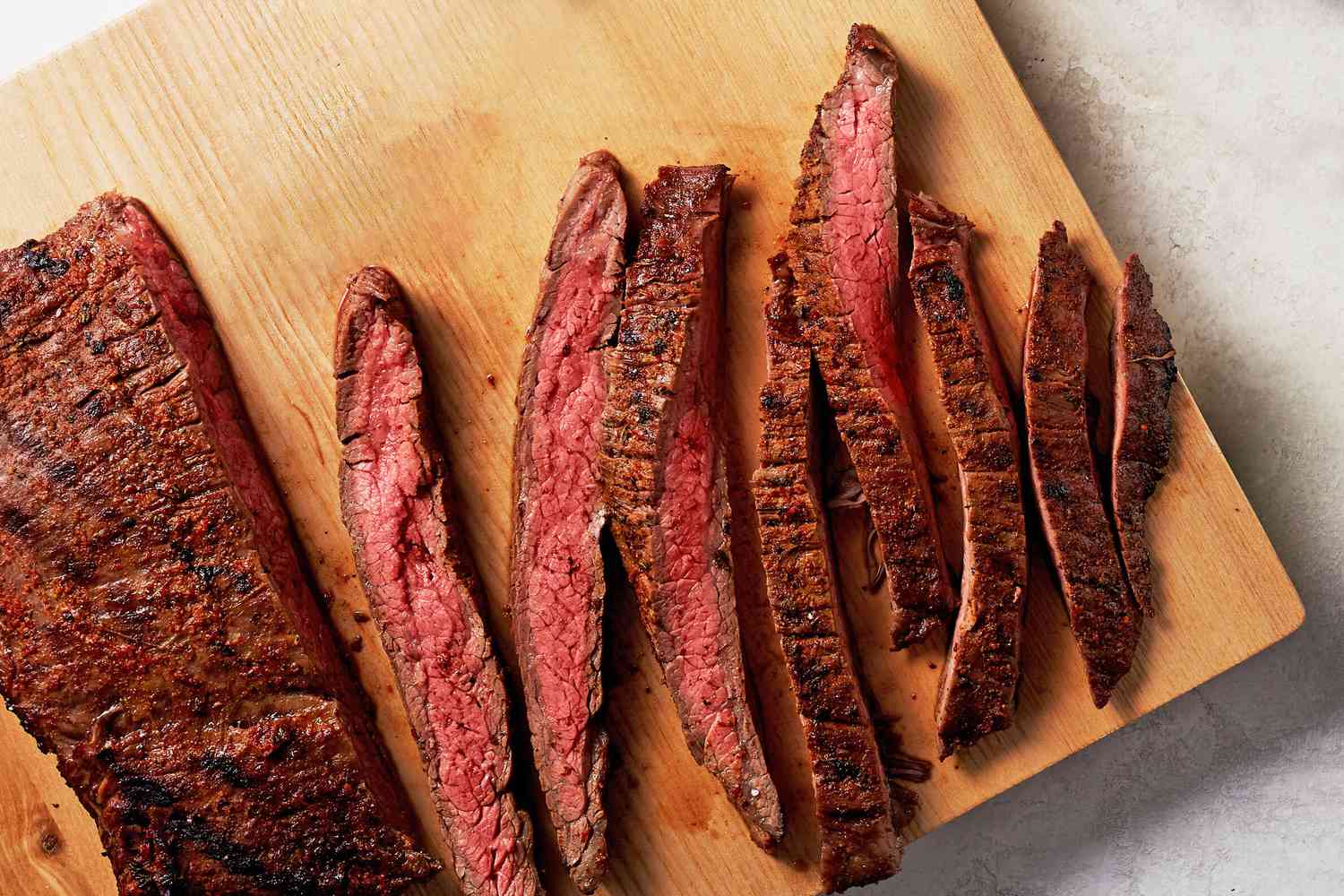
The proper temperature to cook a medium-rare steak is 130 F to 135 F. However, according to the U.S. Department of Agriculture, beef, lamb, and pork should be cooked to at least 145 F (or above if desired). Keep in mind that the lower temperatures in the chart for rare and medium-rare meat are not recommended by the USDA.
The following chart includes temperatures for meat, poultry, seafood, eggs, casseroles, and leftovers.
| Meat | Temperatures |
|---|---|
| Steak/Beef | |
| Rare | 120 F – 125 F (48.9 C to 51.6 C) |
| Medium-rare | 130 F – 135 F (54.4 C to 57.2 C) |
| Medium | 140 F – 145 F (60 C to 62.8 C) |
| Medium-well | 150 F – 155 F (65.5 C to 68.3 C) |
| Well done | 160 F (71.1 C) and above |
| Lamb | |
| Rare | 135 F (57.2 C) |
| Medium-rare | 140 F – 150 F (60 C to 65.5 C) |
| Medium | 160 (71.1 C) |
| Well done | 165 (73.9 C) and above |
| Poultry | |
| Chicken | 165 F – 175 F (73.9 C to 80 C) |
| Turkey | 165° F – 175 F (73.9 C to 80 C) |
| Pork | 145 F (62.8 C) |
| Ham, Fully Cooked (to reheat)* | 140 F (60 C) |
| Ground Poultry | 165 F (73.9 C) |
| Ground Meat | 160 F (71.1 C) |
| Fish and Shellfish | 145 F (62.8 C) |
| Eggs and Egg Dishes | 160 F (71.1 C) |
| Casseroles | 160 F (71.1 C) |
| Stuffing, Dressing | 165 F (73.9 C) |
| Reheated Leftovers | 165 F (73.9 C) |
| Holding Temperature for Cooked Food | 140 F (60 C) |
Safe Storage of Cooked Food and Leftovers
Any temperature between 40 F (4.4 C) and 140 F (60 C) is considered the “danger zone” for food. If food stays in this danger zone for too long, harmful bacteria can grow to levels that could cause illness.
Never leave food out of the refrigerator for over 2 hours. If the temperature is above 90 F (32.2 C), no more than 1 hour.
Keep hot cooked food at or above 140 F (60 C) if you aren’t serving it right away or if you are serving buffet-style. Slow cookers, chafing dishes, and warming trays are good for keeping food warm for serving or use a warming drawer or the Keep Warm setting of the oven (usually between 150 F (65.5 C ) and 200 F (93.3 C).
Put leftovers in shallow containers so they will cool quickly. They must be refrigerated at 40 F (4.4 C) or below within 2 hours—1 hour if the temperature is above 90 F (32.2 C).
There are some exceptions, but most foods can be frozen. Leftover food that won’t be eaten within about three days should be frozen. Foods frozen for a very long time can lose quality, but if frozen at a constant temperature of 0 F (-18 C), the food will be safe. Always label freezer containers and bags with the name of the food or dish and the date. A vacuum sealer is an excellent way to store food, and the appliance is worth considering if you freeze food often. There’s no air in vacuum-sealed food, so no freezer burn. Foods frozen in freezer bags or containers should be used within 3 to 6 months for best quality, while vacuum-sealed food can be frozen for up to 2 years or longer with no loss of quality.
Reheating the Leftovers
Reheat foods to a minimum internal temperature of 165 F (73.9 C), or until they are steaming hot. Microwave ovens do not heat evenly, so when using a microwave to reheat leftovers, cover the container and rotate to ensure they are heated evenly. If possible, check the temperature with an instant-read thermometer.
Are Your Refrigerator and Freezer Cold Enough?
Refrigerated food must be kept at or below 40 F (4.4 C). Many new refrigerators have a temperature display, so you know whether or not it is operating at the correct temperature. It’s also important to keep frozen food at a safe temperature. The temperature of the freezer should be 0 F (-18 C) or lower. If your refrigerator doesn’t have a display, keep a refrigerator/freezer thermometer in it and check it from time to time.
How to Check Your Thermometer for Accuracy
The best way to check a thermometer’s accuracy is with ice water. Boiling water is less accurate because while the boiling point at sea level is 212 F, it’s around 202 F in Denver, Colorado. So, unless you are sure of your boiling point temperature, use the ice water method.
- Fill a container all the way to the top with ice cubes and then fill the container with cold water to about 1/2-inch below the top of the ice.
- Insert the thermometer stem or probe about 2 inches into the ice water, not touching the container.
- Slowly swirl it for about 15 seconds. It should read 32 F (0 C).
